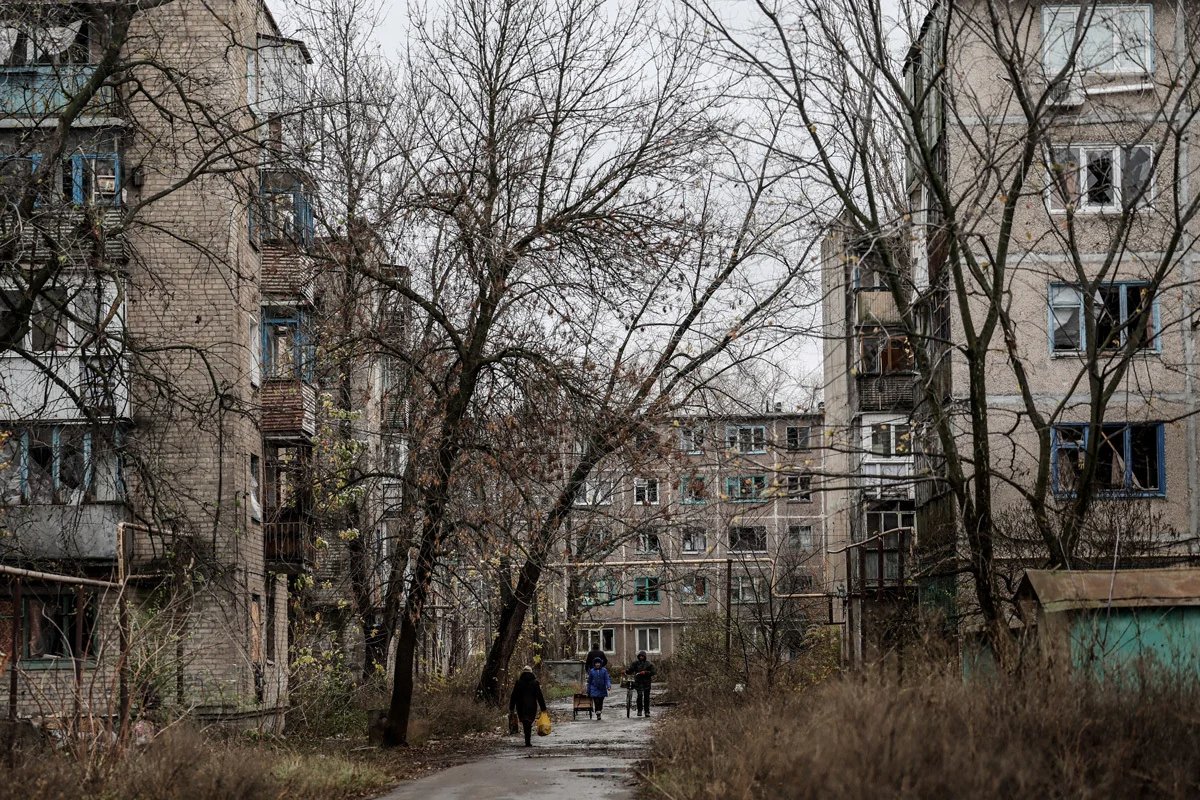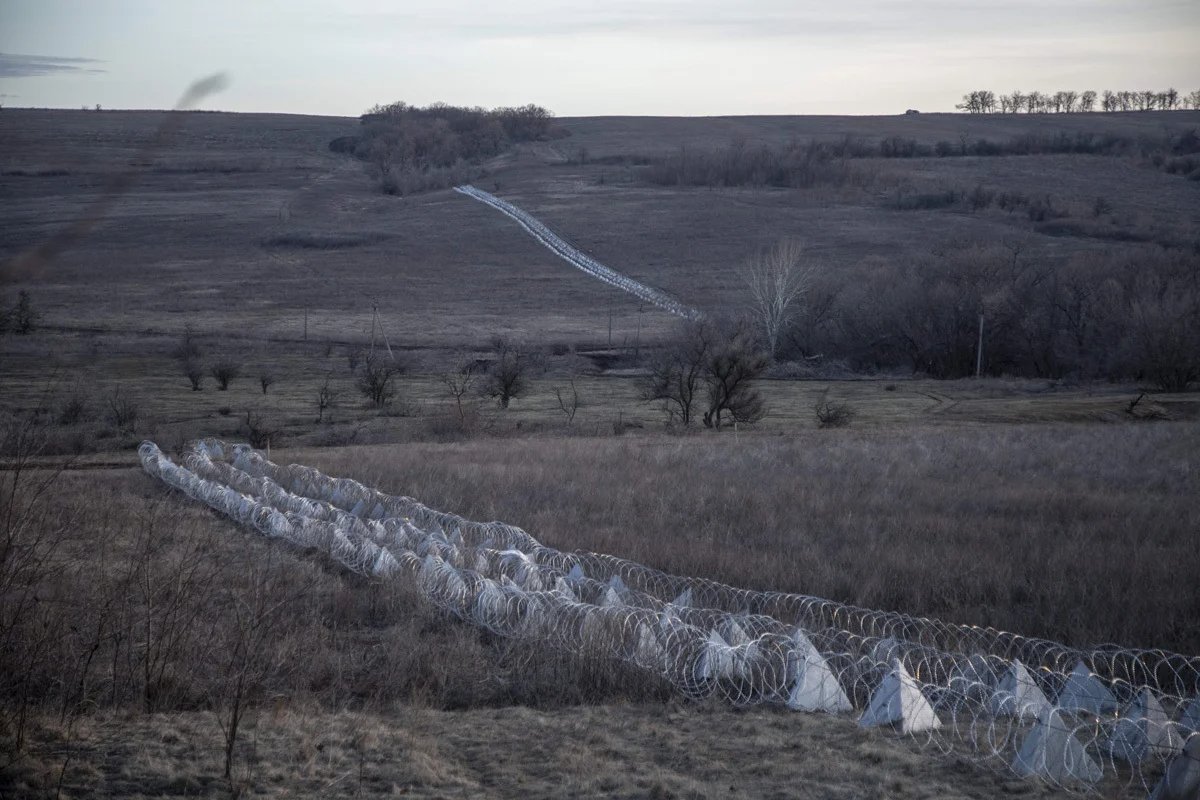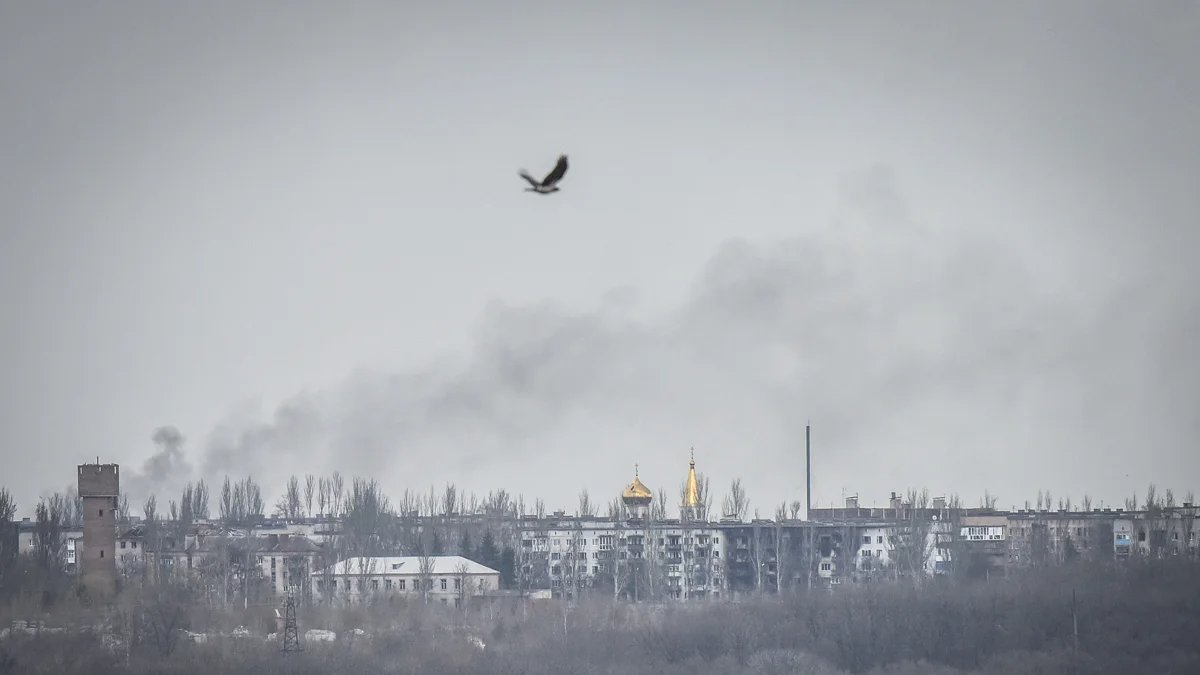The fighting in Ukraine goes on unabated and the Russians continue to advance, despite their losses. Their latest target is the town of Chasiv Yar, near Bakhmut, in the partially occupied Donetsk region.
Analysts Novaya Europe spoke to agree that Russia won’t be able to take the town quickly. Still, it may ultimately fall, given the Ukrainians’ ammunition shortage. Military aid — like the US aid package bill set to be considered by the Senate today — is crucial to secure Ukraine’s defences.
In time for Victory Day
The Commander-in-Chief of the Armed Forces of Ukraine (AFU), Oleksandr Syrskyi, said that the Russian army hoped to capture Chasiv Yar by 9 May, when Russia celebrates the Soviet victory in the Second World War, The Kyiv Independent reported on 14 April. Syrskyi said Russia aimed to break through Ukrainian defences west of Bakhmut, reach the Siverskyi Donets-Donbas canal, seize Chasiv Yar and then make “further progress towards Kramatorsk”, the provisional seat of the Donetsk region.
“The enemy’s plans are being hampered by heroic defence from our brigades, who have dug in and are repelling daily attacks,” Syrskyi said, though he admitted that the threat remained “real”.
The Chief of Ukrainian Defence Intelligence, Kyrylo Budanov, told German TV on 7 April that Ukrainian troops were preparing for the upcoming enemy offensive. “Russian troops will launch their offensive in late May, early June,” Budanov said, stressing that without the help of Western allies, the situation would be “catastrophically difficult” for Ukraine.
A Russian military analyst who wished to remain anonymous told Novaya Gazeta Europe that Russian troops had already gotten close to Chasiv Yar but had suffered heavy losses of personnel and equipment. He said most of the town’s prewar population of 12,000 had evacuated.
“The Russians are trying to attack in several places at once,” said Roman Svitan, a military expert and reserve AFU colonel.
He said that the Russians were also targeting the areas around two other cities in the Donetsk region — Avdiivka and Marinka — and around Bilohorivka in the Luhansk region, but he said the “bulk” of the Russian force was being focused on Chasiv Yar.
Svitan agreed with Syrskyi that the Russians were clearly aiming to capture the town by Victory Day. “The Kremlin has a tradition of tying military victories to important dates,” he said. Svitan said that Chasiv Yar was a strategically important location; if Russian troops captured the town, its high elevation would enable them to fire down on the nearby agglomeration around Kramatorsk.
The success or failure of the operation depended “on how many artillery shells the Ukrainians have,” Svitan said. “If the allies supply the AFU, they’ll be able to effectively defend their positions and hold on to Chasiv Yar.”
Cornerstone
Svitan called Chasiv Yar the cornerstone of Ukrainian defence in the Donetsk region. If the town were captured, he said, the front line would move back significantly, allowing Russian troops to shell and move on the towns of Kostyantynivka, Druzhkivka, Kramatorsk and Sloviansk. If Russia captured those towns, it would effectively occupy the entire Donetsk region.
Regardless of whether Russia is able to capture those towns in the immediate future, a huge number of people will suffer. The area is currently home to a civilian population of more than 300,000, and intense fighting will destroy the towns that house them.
However, according to Yan Matveyev, a military analyst with slain opposition politician Alexey Navalny’s Anti-Corruption Foundation, it will be “almost impossible for the Russians to take Chasiv Yar quickly.” Matveyev said that barring a “major disaster in the AFU defence units”, such as a depletion of their ammunition, they won’t give up Chasiv Yar without a fight, recognising its size and strategic location. “Russian forces haven’t entered the town yet,” Matveyev said, so “the fighting could last for months”.

Locals in Chasiv Yar, 9 November 2023. Photo: Oleh Petrasiuk / EPA-EFE
Military analyst Kirill Mikhailov, formerly of the Conflict Intelligence Team, an independent organisation that investigates armed conflicts, told Novaya Europe that any plan Russia had to seize the city by 9 May was “too optimistic”.
“Victory Day is less than a month away and Chasiv Yar has complex geography,” he said. He said in this way Chasiv Yar is similar to Soledar, a city near Bakhmut that was only destroyed after five months of fighting.
Mikhailov also added that for now the Russians were not in control of any part of Chasiv Yar and that the offensive was focused on the Pokrovsk district, west of Avdiivka, the area around Robotyne and on Terny, near Liman.
The experts attribute Russia’s successes in advancing to its glide bombs, not its superior manpower or artillery. The glide bombs, they said, represent the greatest danger to the AFU along the entire front line.
“The problem is their range and the AFU’s lack of long-range air defence systems,” Mikhailov told Novaya Europe,
adding that although he was inclined to disagree with the panicked statements of some of his Western colleagues about Ukraine’s combat capability, the air defence situation was critical.
“Ukraine is now focusing all its diplomatic efforts on increasing supplies of arms,” Mikhailov said. He said that F-16 fighter jets would “help rectify the situation” but that their efficacy would depend on the “range of the air-to-air missiles supplied with them”. He added that Russians had recently begun using new types of weapons that were more difficult to intercept, such as UMPB D-30 glide bombs and Kh-69 missiles.
“The Ukrainians clearly don’t have a way of repelling the Russian aircraft dropping glide bombs,” the anonymous analyst said. They explained that although the Patriot surface-to-air missile system could repel the bombs, at least two Patriot launchers had already been destroyed, and the remaining systems were needed in Kyiv. “Plus the ammunition they use is very expensive,” the source said, “and Ukraine obviously doesn’t have much left.” He explained that the Russians’ use of unguided heavy bombs, which are designed to raze towns to the ground, would be impossible for Ukraine to defend against without more fighter jets.

New Ukrainian dragon’s teeth fortifications in fields near Chasiv Yar, on 24 February 2024. Photo: Narciso Contreras / Anadolu / ddp / Vida Press
Active defence
The anonymous analyst told Novaya Europe the Ukrainians should have prepared deep, multi-layered defences in the area around Chasiv Yar, knowing that the Russians would have their eyes on the city after it had captured Bakhmut and Avdiivka. Mikhailov said the Ukrainian analysts at DeepState had reported sub-par fortifications in the area in early April.
Svitan pointed out, too, that Ukraine is only firing about 2,000 artillery rounds a day in the region while Russia is firing closer to 10,000 rounds. He said the ratio could soon become even worse.
“If Ukraine’s allies don’t provide shells, the AFU will have to leave Chasiv Yar,” he said, noting that the AFU was clearly “saving ammunition” while it waited to see what further American and European assistance might come.
The US House of Representatives approved the allocation of a $61 billion (€57 billion) aid package to Ukraine Saturday, which is set to come before the Senate on Tuesday. Both Politico and The Washington Post reported Friday that the Pentagon had already prepared a detailed aid package to Ukraine, saying that once signed into law, the delivery of ammunition to the Ukrainian army would take less than a week.
Speed is of the essence when it comes to ammunition deliveries, experts agreed.
“Ukraine’s partners need to hurry up with their shells, air defence missiles and aircraft,” the anonymous analyst said. “As things stand, there’s no reason to think the Russian army is going to completely capture the Donetsk region, but a lack of shells will quickly lead to the AFU losing its positions. Even fortified towns can’t withstand an onslaught without ammunition and air defences. The situation may soon become critical.”

